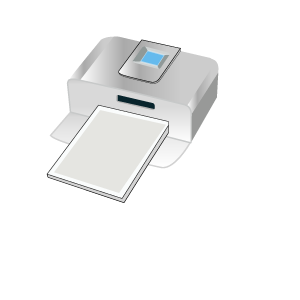


Whether you are new to printing or would like a quick review, this reference section can help you understand some of the factors that affect the printing of your images.
Image and printer resolution
Laser and ink-jet printers work by applying dots of black or colored ink to paper. Whereas image resolution is measured in pixels per inch (ppi), printer resolution is measured in dots per inch (dpi). The printed image size is expressed in inches and is calculated as the image size in pixels divided by pixels per inch.
Images with higher dpi values have more data and result in higher print quality. You can resize images, to create a larger print size, but the print quality can decrease due to the reduced print resolution (ppi).
It is best to consider the resolution of the printer when you choose a resolution for the image you are creating. You can use the following guidelines to determine the image size for printing:
- For a 300-dpi printer, use an image that is 72 to 120 ppi.
- For a 600-dpi printer, use an image that is 125 to 170 ppi.
- For a 1200-dpi printer, use an image that is 150 to 200 ppi.
Image color and lightness
Computer monitors display color by combining red, green, and blue light on the screen. Color printers, however, use a combination of cyan, magenta, yellow, and black inks. The differences between these two color modes can cause images to appear darker on paper than on the screen. As you become familiar with how your printer handles color, you can adjust your images to compensate for these differences. If the printed image appears too dark, you can adjust the brightness or contrast.
Paper quality
The texture and color of the paper used for printing affect the quality of the printed image. For example, porous paper can cause colors to bleed into each other, colored paper can alter the image colors, and off-white paper can reduce the contrast and vibrancy of the image colors. For recommendations on which paper to use for printing, refer to the documentation supplied with your printer.
File formats
Saving your image in the PspImage format provides the most flexibility if you plan to print your image on a personal printer. CorelPaintShopPhotoPro prints all layers in an image, so you do not need to flatten the image by merging the layers. If you are using a black-and-white printer, you can print your images in grayscale.
If you are sending the image to a printing service, you need to flatten the imagethat is, merge the layersbefore you save the image. The program automatically flattens an image when you save it in most formats other than PspImage. It is best to consult with your printing service about file format, resolution, and color depth requirements.
Keywords: print, dpi, settings, ppi, resolution, image, quality, size, detail, psp
Was this article helpful?
Tell us how we can improve it.